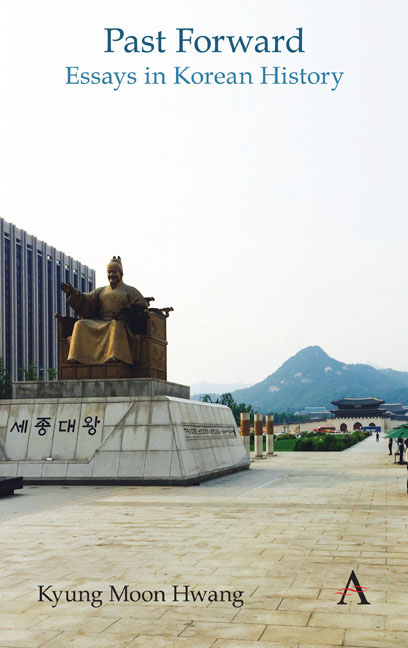Book contents
- Frontmatter
- Contents
- List of Figures
- Foreword
- Chronologies of Korean History
- Themes
- Acknowledgments
- Note on Romanization and Spelling
- Part I Circulating History
- 1 Recycling Names for Korea
- 2 Toppling Tyrants
- 3 Religion and Secularism
- 4 Commemorating the Comfort Women
- 5 May 16 and May 18
- 6 Tragedy and Farce
- 7 Generational Renewal
- Part II Durable Traditions
- Part III Ancient Remains
- Part IV Dynastic Depths
- Part V Modern Origins
- Part VI Challenges of Nationhood
- Part VII History Makers
- Part VIII External Presences
- Part IX Trials of Modernization
- Part X Gripped by the Past
- Index
2 - Toppling Tyrants
from Part I - Circulating History
- Frontmatter
- Contents
- List of Figures
- Foreword
- Chronologies of Korean History
- Themes
- Acknowledgments
- Note on Romanization and Spelling
- Part I Circulating History
- 1 Recycling Names for Korea
- 2 Toppling Tyrants
- 3 Religion and Secularism
- 4 Commemorating the Comfort Women
- 5 May 16 and May 18
- 6 Tragedy and Farce
- 7 Generational Renewal
- Part II Durable Traditions
- Part III Ancient Remains
- Part IV Dynastic Depths
- Part V Modern Origins
- Part VI Challenges of Nationhood
- Part VII History Makers
- Part VIII External Presences
- Part IX Trials of Modernization
- Part X Gripped by the Past
- Index
Summary
In mid-2016, at a particularly low point in inter-Korean relations, the new South Korean government of President Moon Jae-in revealed the formation of a special “decapitation” squadron targeting the North Korean leader. Such units had always existed in some form, probably, but the point was to make an impression on such a mercurial, absolutist dictator, as every other approach appeared to have failed.
How to shake some sense into, or better yet, get rid of a tyrant whose behavior seems not just unpredictable or bizarre, but frightening, has been a problem throughout human history. In hindsight, a well-timed assassination at times would have produced an undeniably better outcome. Who could argue against the notion, for example, that killing Adolf Hitler sometime in the 1930s would have prevented much of the carnage around the world in the 1940s?
In Korea's past as well, this challenge arose alongside systematic rules on political legitimacy. Until the twentieth century, as in most other places, sovereignty almost always lay in a hereditary monarch, whose supreme authority came from being the child or relative of the preceding monarch and hence a descendant of the man who originally took power through force. The military leaders who founded the dynastic states, whether it was Goryeo, Joseon or North Korea, established lines of monarchical power in which legitimacy was passed down to the founder's descendants in orderly succession. A new king would formally take the throne once the previous king, usually his father, died.
But this did not always work out as designed. Some monarchs were pushed out by ambitious or merciless royal relatives coveting the throne. Others were forced to abdicate under extraordinary circumstances. The last two Joseon monarchs, Gojong and Sunjong, for example, were stripped of their positions by the conquering Japanese in 1907 and 1910, respectively. And the Joseon founder himself, Taejo, could not stomach the murderous infighting among his children and stepped away from the throne in 1398, just six years after establishing his kingdom.
Throughout the five centuries of the Joseon era, however, only two monarchs were considered so terrible, so dangerous and so immoral that top ministers took the lead in toppling them.
- Type
- Chapter
- Information
- Past ForwardEssays in Korean History, pp. 5 - 7Publisher: Anthem PressPrint publication year: 2019



